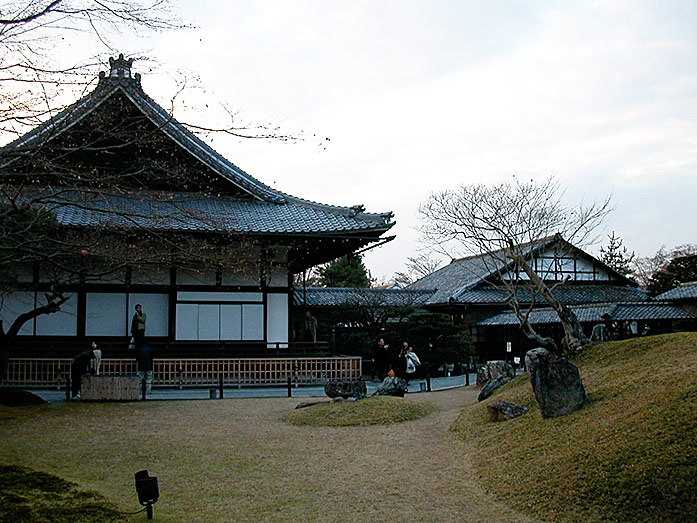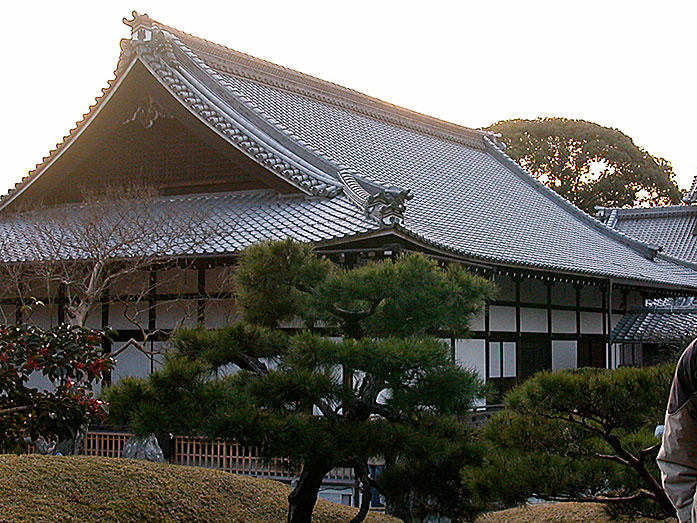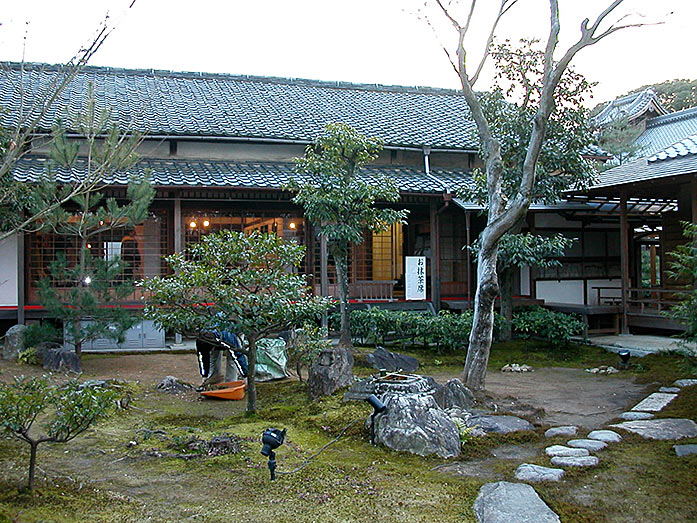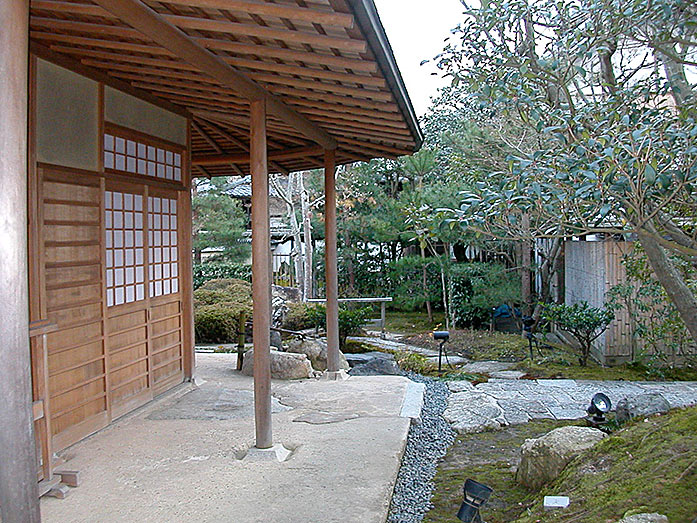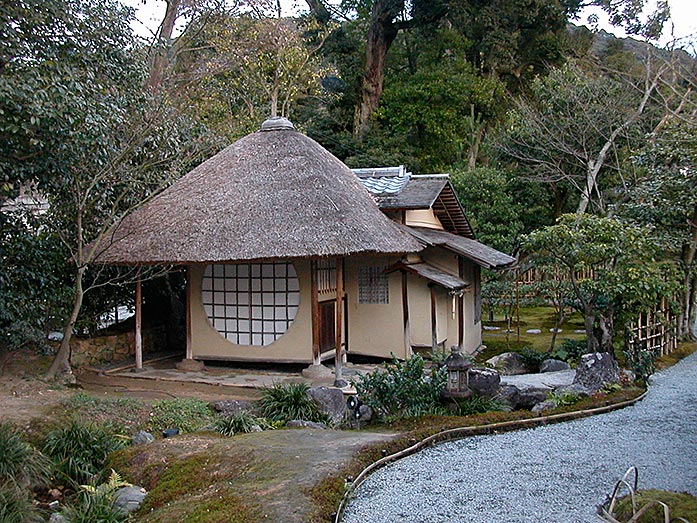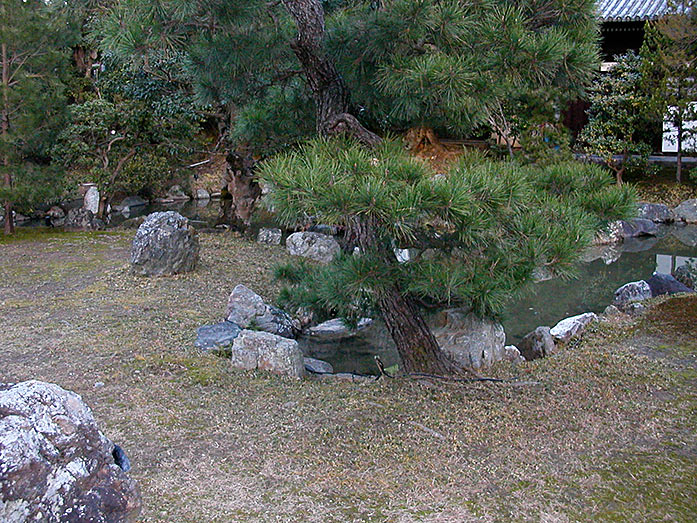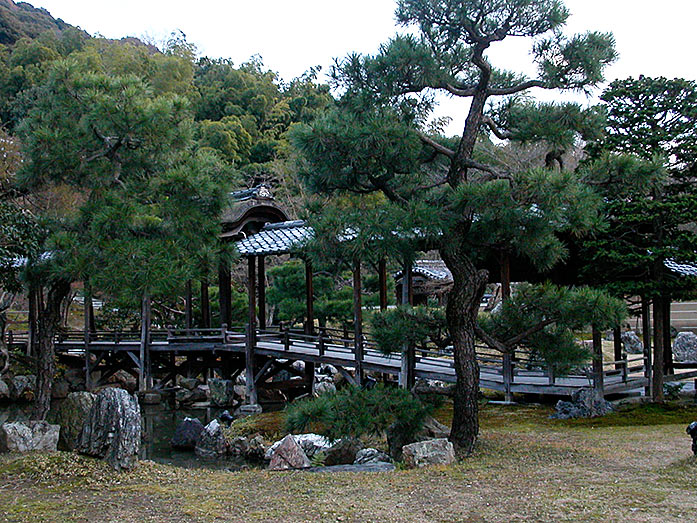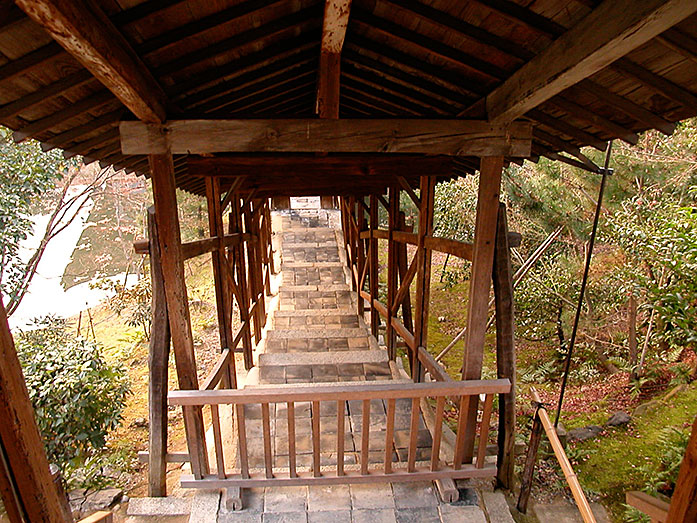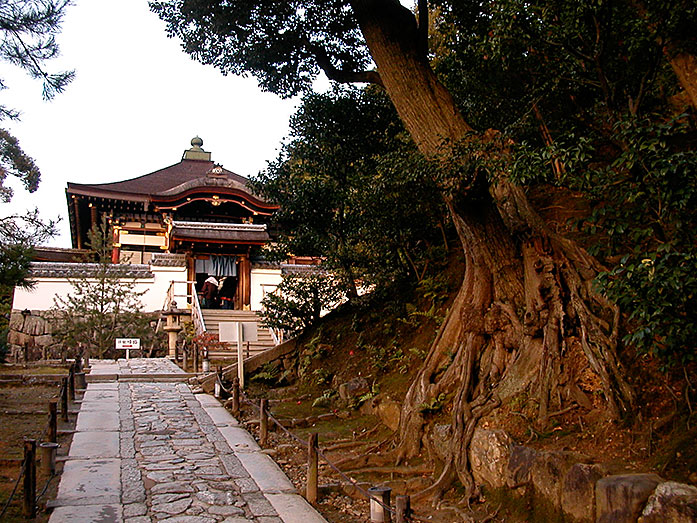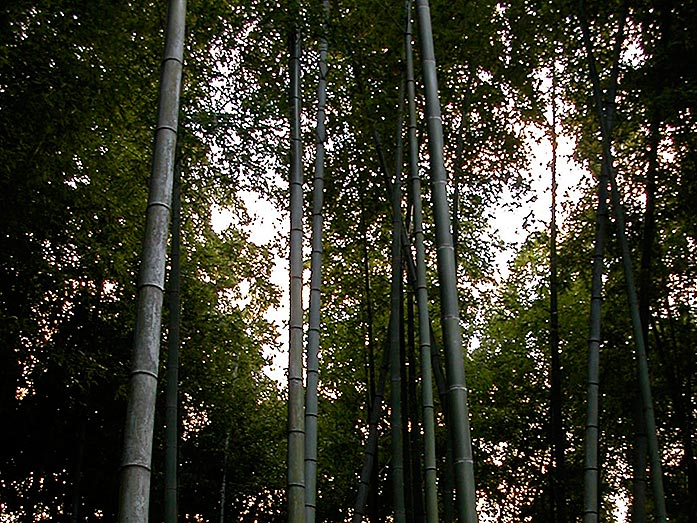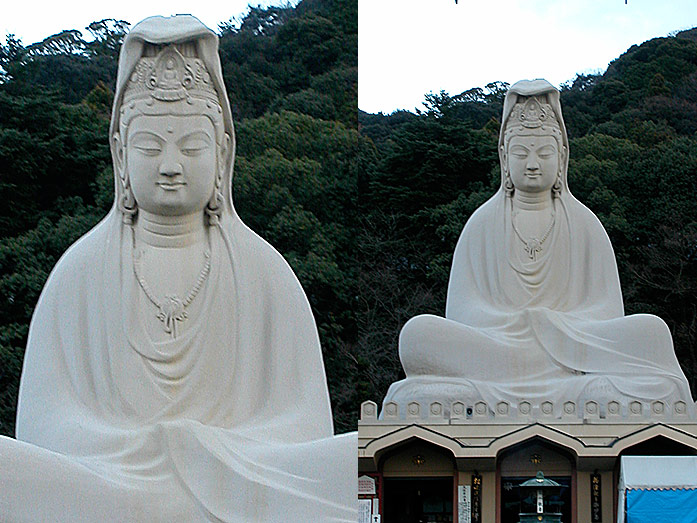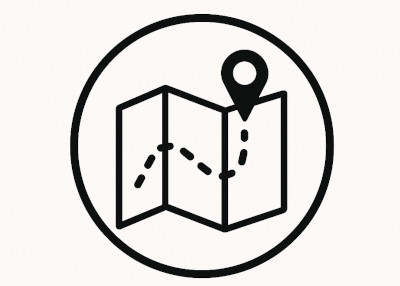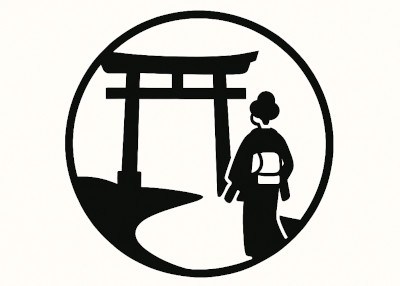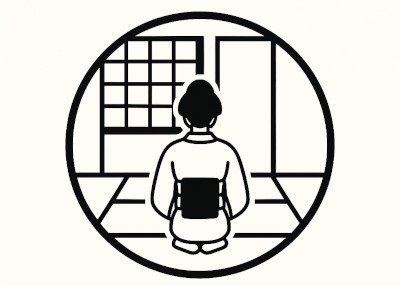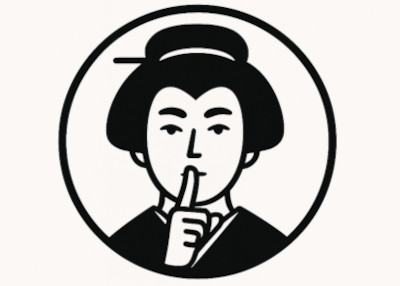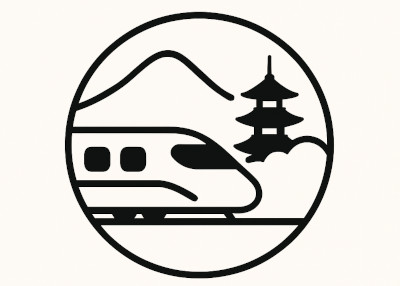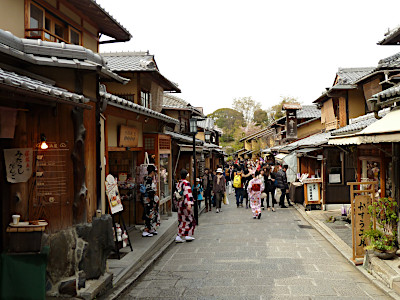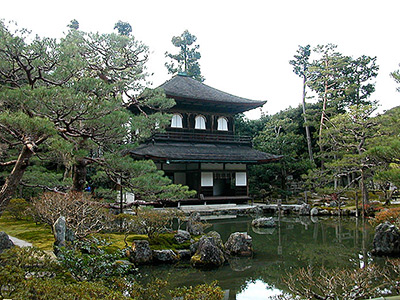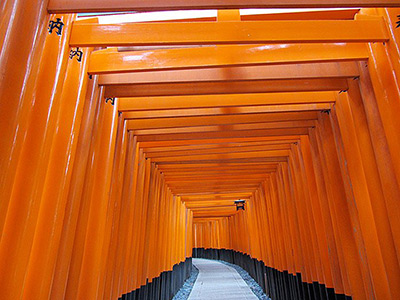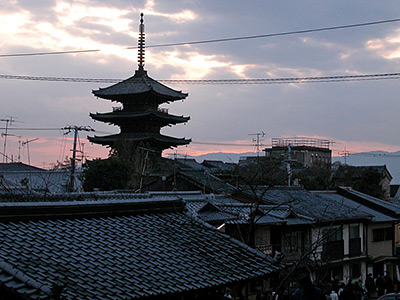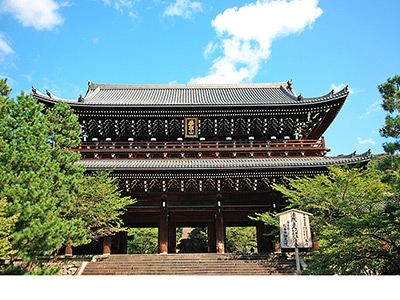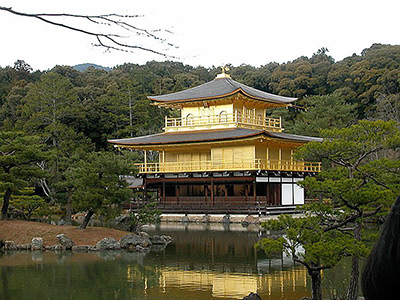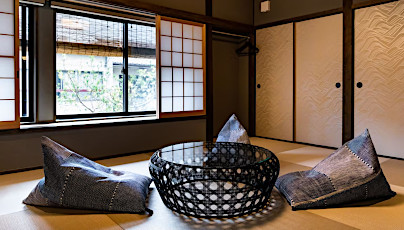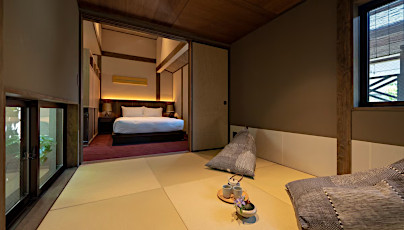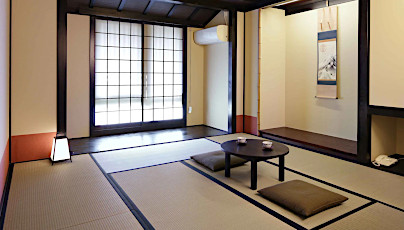Kodai-ji Temple in Kyoto
This post can contain affiliate links, which means that we may receive a small commission if you make a purchase using these links.
Facts & Figures
Kodai-ji Temple is one of the greatest Zen temples in Kyoto, located within the Higashiyama District. The temple is officially known as Kodaiji-jushozenji and belongs to the Rinzai Buddhist sect. It was established in 1606 to pay tribute to Toyotomi Hideyoshi (1537 - 1598), the warlord of the Sengoku era (1467 - 1568). He is considered the second great unifier of Japan, after Oda Nobunaga (1534 - 1582) and before Tokugawa Ieyasu (1543 - 1616).
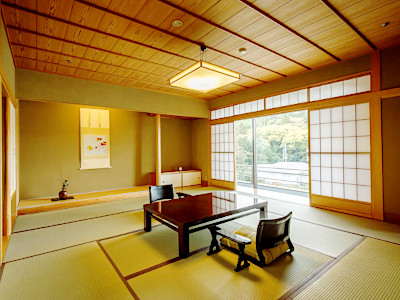 Best Places to Stay in Kyoto >
The temple's most important feature is the high-quality maki-e lacquer work visible on and inside the various buildings on site. The place is also famous for its gardens. The gardens are designated by the Japanese Government as a historic site and place of scenic beauty. Architect and landscape designer Kobori Enshu (1579-1647) created several of the formal gardens. He was also responsible for the garden at Shoren-in in Kyoto. Many buildings and objects of the temple are important cultural properties of Japan like the Kaisan-do Hall (Founder's Hall), Kasai-tei (Teahouse), Shigure-tei (Teahouse), Otama-ya (Sanctuary), Omotemon (Gate to Sanctuary) and Kangetsudai (Moon Viewing Pavilion). Kodai-ji is an excellent example of the architectural style during the Azuchi–Momoyama period (1568 - 1600). Take your time to explore the whole temple complex. Make a stop at a tea house and enjoy some sweets and matcha tea for just 500 yen. It is one of the best temple experiences you can get in Kyoto. Many Japanese couples come to this place to hold their wedding ceremonies here for a happy life. Maybe you are lucky to witness one:)
Best Places to Stay in Kyoto >
The temple's most important feature is the high-quality maki-e lacquer work visible on and inside the various buildings on site. The place is also famous for its gardens. The gardens are designated by the Japanese Government as a historic site and place of scenic beauty. Architect and landscape designer Kobori Enshu (1579-1647) created several of the formal gardens. He was also responsible for the garden at Shoren-in in Kyoto. Many buildings and objects of the temple are important cultural properties of Japan like the Kaisan-do Hall (Founder's Hall), Kasai-tei (Teahouse), Shigure-tei (Teahouse), Otama-ya (Sanctuary), Omotemon (Gate to Sanctuary) and Kangetsudai (Moon Viewing Pavilion). Kodai-ji is an excellent example of the architectural style during the Azuchi–Momoyama period (1568 - 1600). Take your time to explore the whole temple complex. Make a stop at a tea house and enjoy some sweets and matcha tea for just 500 yen. It is one of the best temple experiences you can get in Kyoto. Many Japanese couples come to this place to hold their wedding ceremonies here for a happy life. Maybe you are lucky to witness one:)
- Kodaiji Temple:
- Opening Hours - 9:00 am to 5:30 pm (last entry at 5:00 pm)
- Admission Fee - 600 yen (Adults), 250 yen (Students), free (Children)
- Entokuin Temple:
- Opening Hours - 10:00 am to 5:30 pm (last entry at 5:00 pm)
- Admission Fee - 500 yen (Adults)
- Kodai-ji Sho Museum:
- Opening Hours - 9:30 am to 6:00 pm (until 10:00 pm during Kodai-ji Temple's nighttime opening)
- Admission Fee - 300 yen (Adults)
- 3 places combi ticket (Kodai-ji Temple, Kodai-ji Sho Museum and Entokuin Temple):
- Admission Fee - 900 yen (Adults)
History
In 1606 Kodai-ji temple was founded in memory of general Toyotomi Hideyoshi (1537-1598) by his wife Kita-no-Mandokoro (1548-1624) also known as Nene or Kodaiin. The shogun Tokugawa Ieyasu (1542-1616) donated the money to build this beautiful and magnificent temple. Toyotomi Hideyoshi and Kita-no-Mandokoro (Nene) are enshrined in Otama-ya Sanctuary. In 1789 most of the temple buildings burned down. Only some structures survived like the Kangetsudai (Moon Viewing Pavilion), Otama-ya (Sanctuary), Kaisan-do (Founder's Hall), Kasa-tei (Teahouse), and Shigure-tei (Teahouse).
Location

Kodaiji is located in the Higashiyama District north east of Yasaka Hokanji Temple in Kyoto.
Address: 526 Shimogawara-cho, Higashiyama-ku, 605-0825, Kyoto
How to get to Kodai-ji?
- 15min from Kyoto Station to Higashiyama Yasui stop by bus number 100 or 206 and
- 10min walk from Higashiyama Yasui bus stop to Kodaiji temple
Sightseeing spots
Top:
Main Hall (Hojo) - In 1912 Hojo was reconstructed after a fire. The whole building was covered in lacquer and gold before, but the decision was made the change it to a more simple design. In the past, it was the Chief Abbot’s Quarters and now you can come here for worship in the main hall. The stone garden right in front of the building displays interesting modern art pieces in spring and autumn. At night there is a beautiful illumination of these art objects.
Entokuin Temple - It is a small sub-temple of Kodai-ji including two Zen gardens. Read more >
Kaisan-do Hall (Founder's Hall) - Kaisan-do is dedicated to the founding priest Sanko Joeki (1572 – 1650). He was also the 195th Abbot of Kennin-ji Temple in Kyoto. Inside the building, you will find his statue and beautiful paintings by artists from the Tosa and Kano schools, which both developed during the Muromachi period (1392 - 1573). The elder brother and his wife of Kita-no-Mandokoro are also honored there with 2 statues.
Rai-do (Worship Hall) - The name refers to the large outer section of the Kaisan-do Hall.
Temple Gardens - Enjoy the different garden styles like a rock garden (hashintei) or the tsukiyama style garden (lush garden featuring a pond).
Iho-an Tea Ceremony House (The Cottage of Lingering Fragrances) - The tea house is known for its large circular window. It was designed by tea master Sen-no-Rikyu (1522 - 1591).
Otamaya Sanctuary - A small mausoleum in which Nene (Kita-no-Mandokoro) and her husband Toyotomi Hideyoshi are enshrined. Otamaya contains also the wooden statues of both. The interior design is called Kodaji Makie, a unique lacquerwork with sprinkles of gold and silver powder. This makes the decoration of the altar, stairs, and interior panels very beautiful and elegant.
Omotemon Gate - The gate was relocated from the Fushimi Castle. It was constructed by Toyotomi Hideyoshi.
Kangetsu-dai - Hideyoshi used this roofed bridge from Fushimi Castle as a moon-viewing platform. The bridge crosses a stream and Engetsu Pond and connects to the Kaisan-do Hall and Tamaya building.
Garyo-ro (Lying dragon corridor) - This wooden corridor connects Kaisan-do Hall and Otamaya.
Jinbaori of Hideyoshi -Toyotomi Hideyoshi was wearing this coat (Jinbaori) over his armor. This exhibition piece was made with silver and gold thread. It is a designated Important Cultural Property.
Bamboo Grove - The bamboo grove creates a beautiful atmosphere and is the perfect spot for a rest.
Tea Houses - There are many tea houses at the temple grounds, but you should not miss the Kasa-tei (Umbrella) and the unique 2-floor Shigure-tei (Shower of Rain) tea house. It was designed by Toyobo Sochin (disciple of Sen-no-Rikyu) in 1587.
Festival & Events (dates can change without notice)
March
Illumination event at Kodai-ji (6th March - 6th of May)
Kodai-ji temple is open till 9:30 pm during that period. It is enough time to enjoy the illumination after sunset.
April
Miyako Odori (1st - 31st)
The traditional annual spring dance of the Kyoto district Gion Kobu performed by Geiko and Maiko is a must-see on your Kyoto visit. Don't miss the most popular dances the Miyako Odori "Cherry Blossom Dances" or "Dances of the Old Capital" at the Gion Kobu Kaburenjo Theater (located close to Gion Corner).
May
Aoi Matsuri (15th)
The highlight of this festival is a large parade from the Imperial Palace through the Shimogamo Shrine and ends at the Kamigamo Shrine (Kamigamo-jinja). More than 500 people wearing aristocratic costumes from the Heian Period (794 - 1185). The Aoi Matsuri belongs with the Gion Matsuri and Jidai Matsuri as the three most famous festivals in Kyoto.
July
Gion Matsuri (whole month)
The month of July is full of different events like the Yoiyama - Kyoto's Magical Night (locals in kimonos look at the giant Gion floats the day before the parade) or the famous Yamaboko Junko (float procession on the 17th of July).
August
Illumination event at Kodai-ji (1st - 18th)
Kodai-ji temple is open till 9:30 pm during that period. It is enough time to enjoy the illumination after sunset.
October
Jidai Matsuri ("Festival of Ages") (22nd)
People celebrate with a large parade between Imperial Palace to Heian Shrine the anniversary of the foundation of Kyoto. App. 2000 participants wearing historical costumes from different time periods. Enjoy this great festival which lasts around 2 hours.
Illumination event at Kodai-ji (end of October - beginning of December)
Kodai-ji temple is open till 9:30 pm during that period. It is enough time to enjoy the illumination after sunset.
Where to stay in Kyoto?
Book your Flight Tickets and Rental Car for your Japan trip
Day trips from Kyoto:
Travelers who viewed Kodai-ji viewed also:
Top rated - Best Machiya Houses in Kyoto
THE MACHIYA Ebisuya, 192 Ebisuya-cho Shimogyo-ku, Kyoto 600-8062
This 3-star guesthouse got an excellent rating. All 30 individually furnished rooms offer free WiFi, air conditioning, bathrooms incl. toilets, fridges, 40-inch flat-screen TVs, and more. THE MACHIYA Ebisuya is located in central Kyoto.
View on Expedia.com
This 3-star guesthouse got an excellent rating. All 30 individually furnished rooms offer free WiFi, air conditioning, bathrooms incl. toilets, fridges, 40-inch flat-screen TVs, and more. THE MACHIYA Ebisuya is located in central Kyoto.
View on Expedia.com
The Machiya Kazahaya, 570-6 Kazahayacho, Shimogyo-ku, Kyoto, Kyoto, 600-8475
The Machiya Kazahaya offers for all guest rooms free WiFi, air conditioning, safes, bathrooms with toilets, refrigerators, and much more. Enjoy also the beautiful Japanese Garden. Guests gave this property the rating - Exceptional.
View on Expedia.com
The Machiya Kazahaya offers for all guest rooms free WiFi, air conditioning, safes, bathrooms with toilets, refrigerators, and much more. Enjoy also the beautiful Japanese Garden. Guests gave this property the rating - Exceptional.
View on Expedia.com
Kyomachiya Ryokan Sakura Urushitei, 425 Kichimonjicho, Shimogyo-ku, Kyoto, 600-8069
This beautiful 3-star guesthouse offers 32 rooms with free WiFi, air conditioning, bathrooms incl. showers and toilets, refrigerators, and much more. Enjoy also the relaxing indoor public bath (no minerals). Guests gave this property the rating - Wonderful.
View on Expedia.com
This beautiful 3-star guesthouse offers 32 rooms with free WiFi, air conditioning, bathrooms incl. showers and toilets, refrigerators, and much more. Enjoy also the relaxing indoor public bath (no minerals). Guests gave this property the rating - Wonderful.
View on Expedia.com

